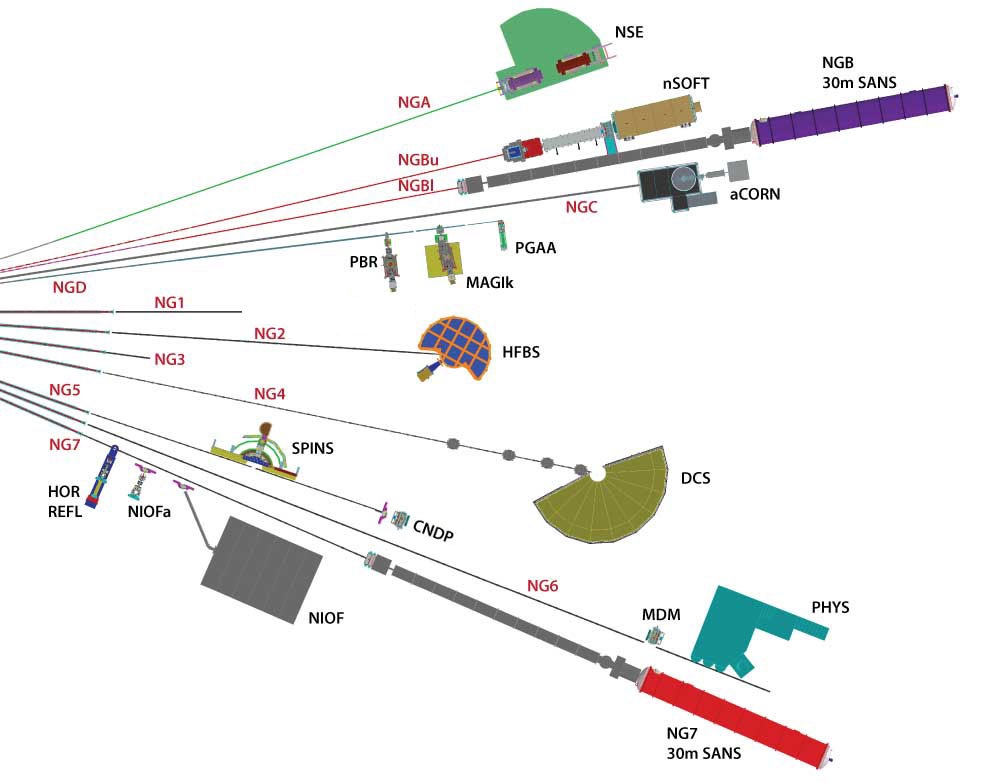COLD NEUTRON INSTRUMENTS
Plan View of the NCNR Guide Hall

Twelve neutron guides transport neutronsemerging from the primary cold source through distances of tens of metersto the stations in the guide hall. Another cold neutron beamline terminates inside the confinement building, emanating from a small dedicated liquid hydrogen moderator that provides neutrons for an advanced multi-axis crystal spectrometer (MACS). The neutron guides work by a simple principle, i.e., totalexternal reflection of neutrons from the nearly flat interior surfaces of longmetal-coated glass tubes. Neutronswhich graze the surfaces within a small angle (theta less than theta-c =1.18 deg. for 10 A neutrons incident on Ni-58) are totally reflected becausethe index of refraction for neutrons is slightly less than one. The use of Ni-58 coatings in the oldest guides (NG-3,5,6,7) is dictated by their relatively large values oftheta-c, an advantage for producing the highest possible neutronflux at the experimental stations (listed below). Three of the olderguides (NG-1,2,4) have multilayer coatings on top and bottomsurfaces which provide an additional factor of 1.7 in availableneutron intensity. The newest guides (NG-A, B, C, D) also employ multiayer coatings and more complex construction (details), providing additional gains.
Instruments in the guide hall:
Operating in the confinment building:
Last modified 07-May-2014 by website owner: NCNR (attn: Przemek Klosowski)

